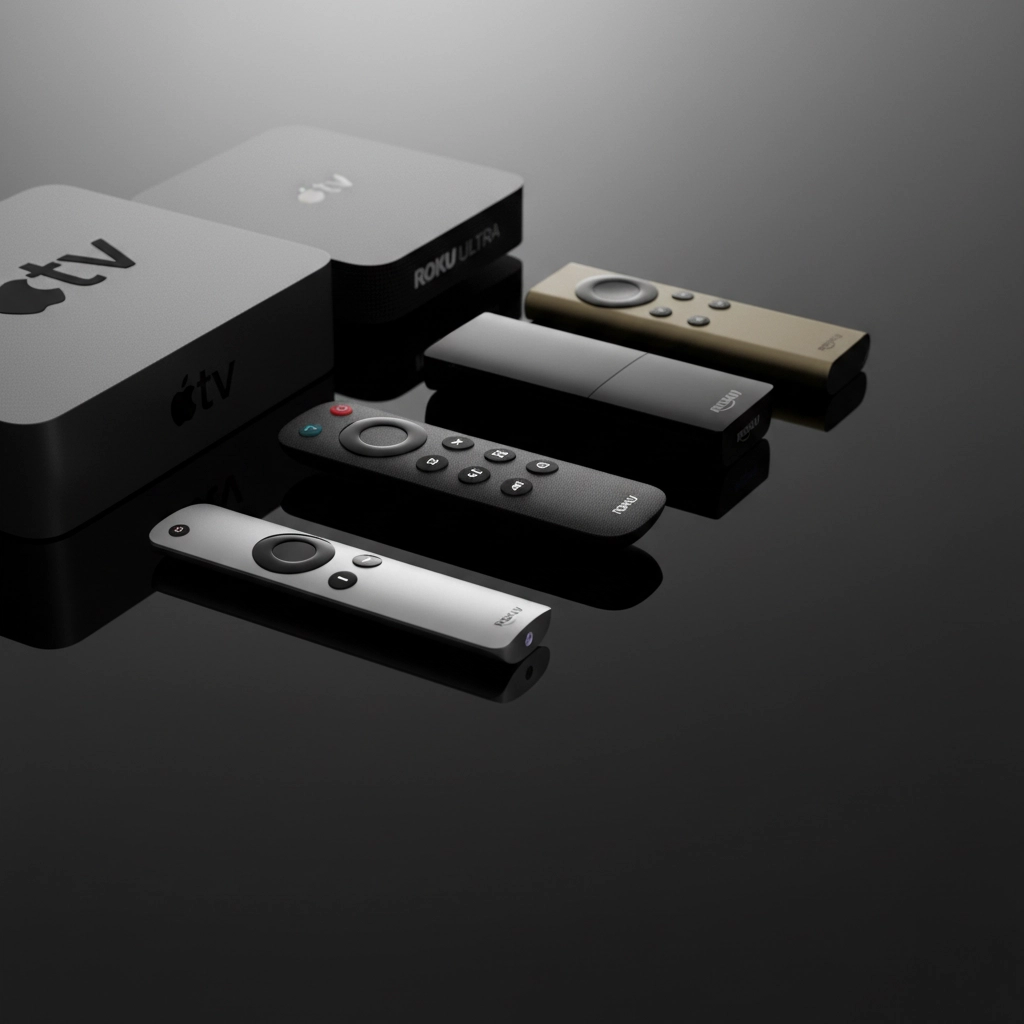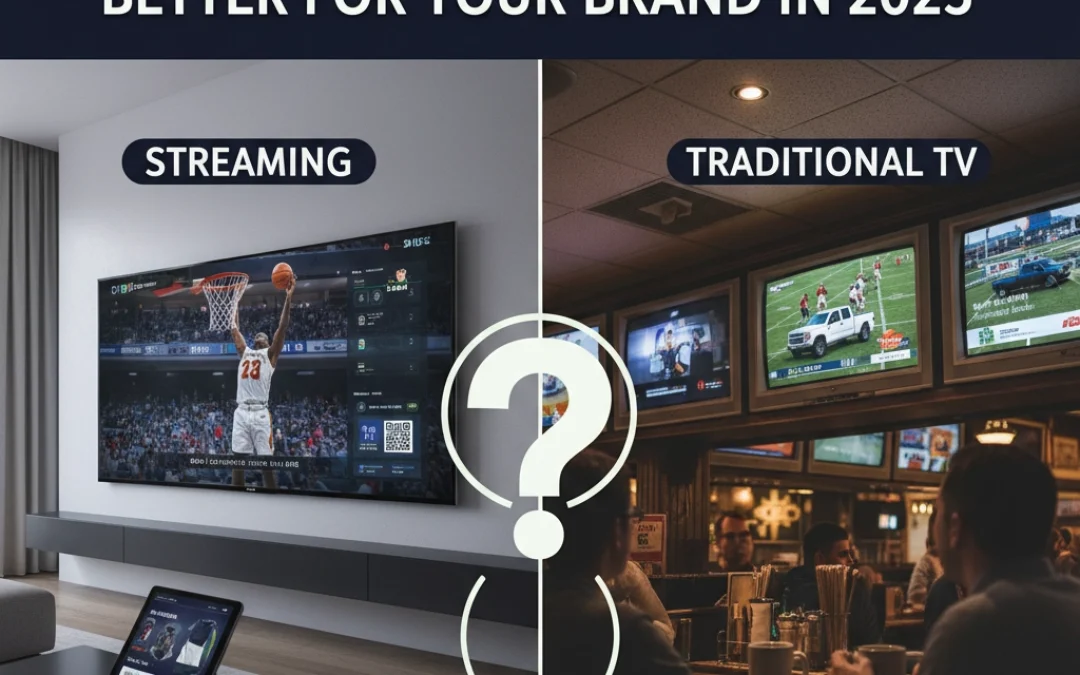The sports advertising landscape has shifted dramatically. Streaming platforms are pouring billions into sports rights, traditional TV networks are fighting to maintain their dominance, and brands are stuck in the middle wondering where to invest their advertising dollars.
Here's the bottom line: streaming sports advertising is delivering 66% better results than traditional broadcast and cable, but that doesn't automatically make it the right choice for every brand. You need to understand exactly what each platform delivers before you make your move.
The Streaming Revolution Is Real (And Profitable)
Streaming platforms have thrown down $60 billion in sports rights spending since 2022: that's a 60% increase from previous years. They're not doing this for charity. The data shows streaming sports advertising works.
Why streaming delivers superior results:
First, you get precision targeting that traditional TV can't match. Streaming platforms use first-party data to serve ads based on actual viewer behavior, demographics, and device preferences. You're not throwing darts at a demographic board: you're hitting specific audience segments with laser accuracy.
Second, creative flexibility gives you options beyond the standard 30-second spot. Streaming allows squeeze-backs, screen ribbons, and in-game placements that appear without interrupting the action. Your brand can integrate naturally into the viewing experience instead of interrupting it.
Third, viewer commitment runs deeper. 46% of sports fans specifically signed up for streaming services to follow particular sports or events. These aren't casual channel surfers: they're invested viewers who chose to pay for content they care about.

The streaming audience breakdown you need to know:
- 58% of sports streaming subscribers keep their service because it's dedicated to a sport they love
- Women and Gen Z viewers are increasingly found in streaming environments
- Real-time analytics provide immediate campaign performance data
- First-party data enables personalized advertising that traditional TV cannot deliver
But here's what most agencies won't tell you: streaming success requires managing fragmentation across multiple platforms. You can't buy one package and reach everyone. Netflix has different sports content than Amazon Prime, which differs from Apple TV+, which differs from ESPN+.
Traditional TV Still Packs a Punch
Don't write off traditional TV yet. 57% of sports fans still primarily watch live sports on traditional television, and there's a compelling reason why.
Traditional TV creates the superior social viewing experience. Sports ads on traditional TV are 47% more likely to be seen by groups of two or more people compared to average non-sports programming. That's exponentially more eyeballs per impression than streaming's typically solo viewing experience.
The NFL generates $5.2 billion annually in national TV advertising with average viewership exceeding 17 million during regular season games. Those numbers represent proven, measurable reach that streaming platforms are still working to match.
Traditional TV's enduring advantages:
- Established measurement systems you can trust
- Broad demographic reach across age groups
- Social viewing amplifies brand exposure
- Familiar buying processes with known pricing models
- No platform fragmentation: one buy reaches the entire audience
The infrastructure advantage cannot be overstated. Traditional TV sports advertising operates on decades of established practices. You know what you're buying, when it will air, and how to measure results.

The Head-to-Head Comparison
Effectiveness and Performance:
Streaming wins decisively. The 66% effectiveness advantage over broadcast and cable isn't marginal: it's transformative. Higher engagement rates, better completion rates, and more precise targeting create superior campaign performance.
Audience Reach:
Traditional TV maintains the edge for broad reach, but streaming captures highly engaged, committed viewers. Traditional TV gives you more people; streaming gives you better people for targeted campaigns.
Creative Opportunities:
Streaming platforms offer innovative ad formats that traditional TV cannot deliver. In-game overlays, interactive elements, and flexible timing create advertising experiences that feel native to the content.
Data and Insights:
Streaming provides real-time analytics, behavioral tracking, and first-party data that traditional TV systems cannot match. You get granular insights into who watched, when they watched, and how they engaged.
Cost and Efficiency:
Streaming typically delivers higher cost-per-impression but significantly better engagement rates. Traditional TV offers predictable pricing but potentially lower efficiency for targeted campaigns.

Your Strategic Decision Framework
Choose streaming sports advertising when:
You need precise audience targeting. If your brand serves specific demographics, streaming platforms can deliver exactly those viewers without wastage.
Creative flexibility matters to your campaign. When standard commercial breaks won't effectively communicate your message, streaming's innovative formats provide better options.
Performance metrics drive your decisions. Streaming platforms provide detailed analytics that traditional TV measurement systems cannot match.
You're targeting younger demographics. Gen Z and millennials increasingly consume sports content through streaming platforms.
Choose traditional TV sports advertising when:
Maximum broad reach is your primary goal. When you need to reach the widest possible audience across all demographics, traditional TV still delivers superior scale.
Social viewing amplification benefits your brand. Products or services that benefit from group discussion or shared experiences leverage traditional TV's social viewing advantage.
Established buying relationships matter. If you have existing relationships with traditional broadcasters or prefer familiar measurement systems, traditional TV provides operational simplicity.
You're targeting older demographics who primarily consume traditional television content.

The Hybrid Approach That Actually Works
Most successful sports advertisers in 2025 use both platforms strategically. Here's how to structure your approach:
Use streaming for precision strikes. Target specific audience segments with tailored creative that leverages streaming's data advantages and flexible formats.
Use traditional TV for broad awareness. Maintain baseline brand presence across diverse demographics while capitalizing on social viewing experiences.
Coordinate messaging across platforms. Ensure your streaming precision campaigns and traditional TV broad reach efforts reinforce consistent brand messaging.
Measure differently. Apply streaming's detailed analytics to optimize targeting while using traditional TV's proven metrics to measure broad reach effectiveness.
The fragmented sports landscape means exclusive content exists across multiple platforms. A hybrid approach ensures you reach your complete target audience rather than missing segments locked behind different paywalls or viewing preferences.
Making Your Decision
Remember this: the "better" platform depends entirely on your specific objectives, target audience, and campaign goals. Streaming sports advertising delivers superior engagement and targeting precision. Traditional TV sports advertising provides proven broad reach and social amplification.
Don't let industry hype drive your decision. Evaluate your brand's specific needs against each platform's demonstrated strengths. The 66% effectiveness advantage of streaming is compelling, but only if that effectiveness reaches the right audience for your particular business objectives.
Your sports advertising strategy should reflect your brand's reality, not industry trends. Choose the platform: or combination of platforms: that delivers your message to your audience most effectively. Everything else is just noise.


Recent Comments